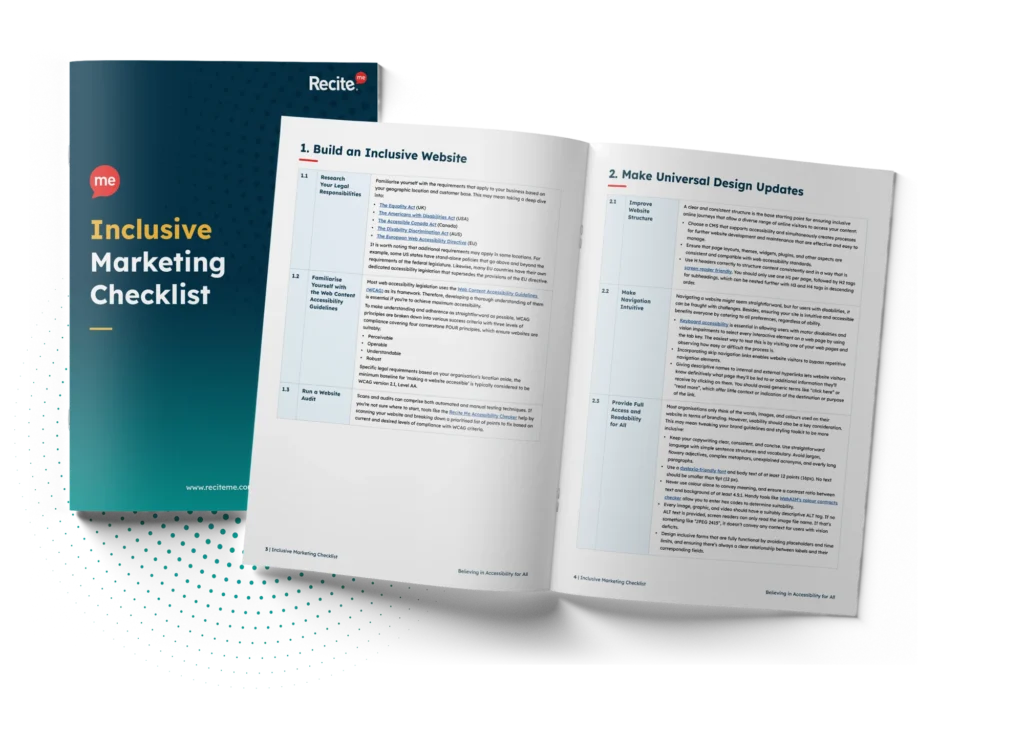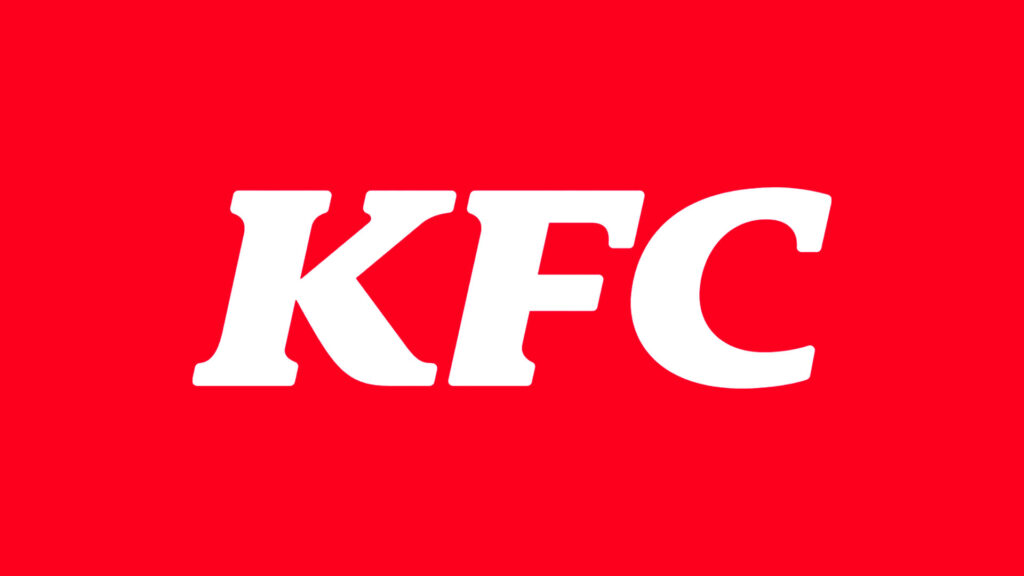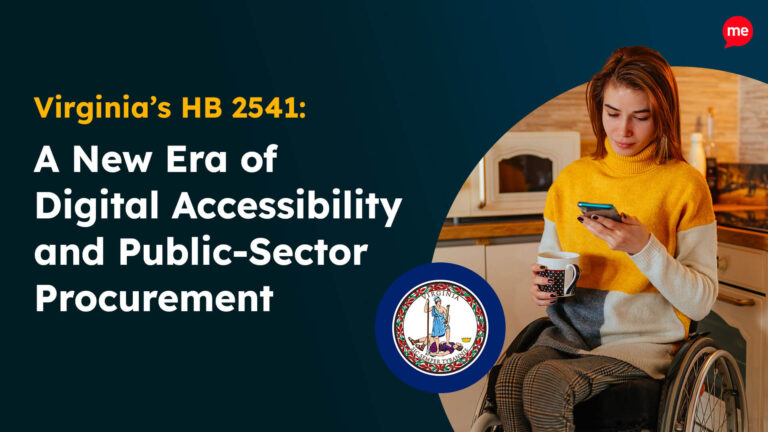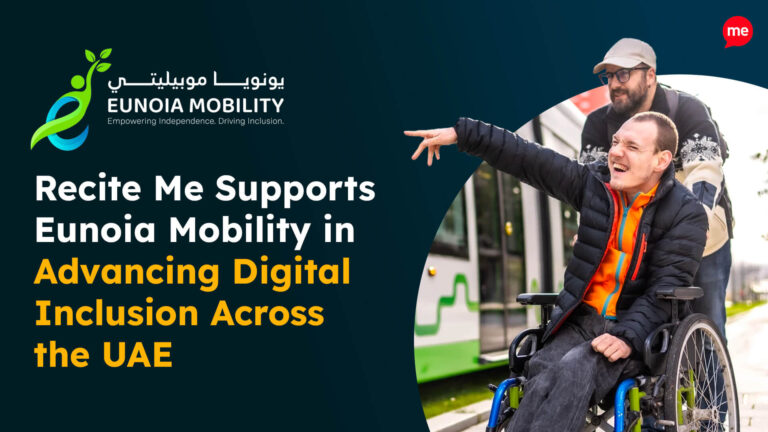In today’s multicultural society, inclusion is no longer a “nice-to-have” feature but a critical component of any successful marketing strategy. For proof, look no further than Kantar’s Brand Inclusion Index 2024, which established that diversity, fairness, and inclusion are now non-negotiable for Gen Z and Millennials – as well as those who are part of high-growth, underserved populations.
But what exactly is inclusive marketing, and how does your organisation go about designing strategies that make the most significant impact across a diverse range of market segments? Read on to find out!
What is Inclusive Marketing?
Inclusive marketing is the practice of designing and delivering messaging strategies that authentically represent diverse audiences at every stage of the marketing process—from product development to messaging and distribution.
It’s all too easy to think of inclusion as avoiding exclusion. However, there’s a bit more to it than that. Truly inclusive marketing goes beyond the basic principles of featuring diverse faces in your advertisements and mail shots. It’s about taking active, measured steps to ensure everyone feels seen, heard, and valued.

Download our Inclusive Marketing Checklist
Start your journey to inclusive with quick and actionable steps from our checklist!
Inclusive marketing doesn’t have to be complicated. This checklist breaks down everything you need to know to follow inclusive marketing best practices. Download your checklist today and get started right away.
Why is Inclusion an Essential Element of Your Marketing Strategy?
If you’re thinking, “Because it’s a moral imperative,” you’re not entirely wrong. After all, that is an essential consideration. However, the bottom line is that our society has evolved to become increasingly diverse and interconnected, and customers now expect more from the brands they engage with. Taking an inclusive approach helps you meet these expectations and ensure campaigns resonate with a broader audience, foster deeper connections, and ultimately, drive better business outcomes:
- Expanded market reach – Inclusive marketing opens up new opportunities by reaching demographic groups that may have previously been overlooked.
- Enhanced brand loyalty – Customers who see themselves represented in your messaging are more likely to feel a sense of connection and become long-term brand advocates.
- Elevated reputation – Brands that prioritise inclusivity are often viewed more favourably by the public, making inclusive marketing teams trusted leaders in social responsibility.
- Reduced legal and ethical risk – Inclusive marketing helps brands avoid discriminatory practices and ensures compliance with legislative requirements.
The Fundamental Principles of Inclusive Marketing
There’s no one-size-fits-all approach to inclusivity. It’s about being intentional in every decision to ensure your marketing efforts resonate with diverse audiences in meaningful and respectful ways. This requires a commitment to understanding the unique needs of different consumer backgrounds, identities, and experiences, including aspects like:
- Race
- Ethnicity
- Gender
- Age
- Religion
- Sexual orientation
- Ability
- Socio-economic status
Let’s explore the fundamental principles involved in creating genuinely inclusive marketing campaigns.

Representation
Effective representation involves portraying people in an accurate and empowering way rather than simply avoiding stereotypes and tokenism. However, there’s more to it than the visuals you feature in your campaigns and promotions. It’s about the stories you tell and the narratives you promote. If you’re looking for a leader to follow, Dove’s mission-driven marketing model has long been heralded for its purposeful push toward enhanced inclusion.
Accessibility
Did you know that over 1 billion people worldwide have a disability that can make accessing online content challenging? That means digital accessibility should be considered from the very beginning of the content creation process rather than as an afterthought. Essential criteria include making sure digital content meets established Web Content Accessibility Guidelines (WCAG) and that your website is designed to be navigable by screen readers.
In-House Diversity
The diversity of your team plays a significant role in the success of your overall marketing efforts. A diverse marketing team brings a variety of perspectives, ideas, and insights that can help create more relatable and impactful campaigns. When your team reflects the diversity of your intended audience, you’re more likely to produce content that resonates with them. In fact, research shows that diverse teams are 70% more likely to capture new markets, highlighting the importance for diversity and inclusion in recruitment.
Language
The language you use in marketing has a powerful impact on how your messages are received. Inclusive language avoids bias, stereotypes, and assumptions and is respectful of different identities and experiences. This means using gender-neutral terms, people-first terminology, and ensuring that messaging is clear and understandable by all segments of your audience.
Authenticity
Modern-day consumers are sceptical and more acutely aware than ever of whether marketing tactics are genuine or performative. Therefore, it’s essential that inclusivity is seen as a core part of your brand’s identity rather than a marketing tactic. Companies like Nike, ASOS, and Old Navy stand out as shining examples of how stepping up your inclusion game can lead to some significant authenticity accolades.
Cultural Sensitivity
Successful culturally sensitive marketing requires research, empathy, and a willingness to adapt. Primary considerations include being aware of cultural nuances, traditions, and taboos, and ensuring that your marketing doesn’t unintentionally offend or alienate any group. This extends to doing due diligence on translations to avoid language-related cultural blunders – like that time Pepsi tried to appeal to the Chinese market with a slogan that translated to “Pepsi brings your ancestors back from the dead.” Doh!
Intersectionality
Intersectionality recognises that people’s identities are complex and multifaceted, and that different aspects of identity (such as race, gender, and class) intersect in unique ways. Inclusive marketing must take these intersections into account, ensuring that campaigns are not only inclusive of individual identity factors, but also of how those factors combine to shape people’s experiences and needs.
The Business Case for Inclusive Marketing
Companies that embrace inclusivity often witness tangible benefits that positively impact their bottom line. Here is a list of compelling business reasons for D&I and inclusive marketing:
- Brand differentiation – 52% of all consumers consider a company’s values when making a purchase (Forbes).
- Revenue generation – In the last year, 41% of consumers have shifted at least 10% of their business away from companies that don’t reflect their stance on diversity and inclusion (Accenture).
- Lead generation – Brands with high diversity scores witness an 83% increase in consumer preference (EDS).
- Conversion rates – 64% of consumers take action after seeing an ad they consider to be diverse or inclusive (Think with Google).
- Customer churn – 38% of consumers say they would stop purchasing from a brand that doesn’t represent their identity (Adobe).
Our 40-page Digital Accessibility & Inclusion Toolkit helps businesses break down online barriers and make a real impact. It offers practical advice on all aspects of digital accessibility, from writing an accessibility statement to accessible website tips and inclusive hiring.

How to Measure and Track the Inclusivity of Your Marketing Activities
Implementing inclusive marketing strategies is a significant step forward. However, measuring their effectiveness is equally crucial. By tracking key performance indicators (KPIs) related to inclusivity, you can ensure that your efforts are making a tangible impact and identify further areas for improvement. Here are a few ideas on how to measure your impact of implementing D&I best practices in marketing:

Engagement Metrics
Look for patterns in engagement across different segments of your audience to identify what’s working, what’s not, and where adjustments are needed. The best metrics for checking whether your campaigns are resonating with your target audiences include:
- Email campaigns – Click-through rates, engagement with embedded content, and unsubscribes.
- Social media campaigns – The number (and nature) of views, shares, and comments.
- Website campaigns – Bounce rates, scroll depth, and time on page.
Accessibility Testing
Ensuring optimum digital accessibility should be a cornerstone of your inclusive marketing strategy. Tools like the Recite Me Accessibility Checker help by identifying barriers that may prevent some users from accessing your website and other digital content. Once identified, issues are broken down into a prioritised fix queue based on the most urgently required updates to fall in line with WCAG best practices – which also ensures compliance with web accessibility legislation.
Customer Feedback Mechanisms
Direct feedback is one of the most reliable ways to gauge the inclusivity of your marketing efforts. By collecting qualitative data on how different demographic groups perceive your brand, you can refine your messaging, improve representation, and address any gaps in your strategy. A few top tactics include:
- Monitoring social media mentions and reviews.
- Sending Pulse, Net Promoter Score (NPS), and Customer Satisfaction (CSAT) surveys.
- Running regular focus groups
- Conducting customer interviews
Audience Segmentation Analysis
Analysing which demographic groups are most engaged allows you to adjust your approach in real time and uncover opportunities for better targeting in future campaigns. Specific KPIs you should be monitoring across every market segment include:
- Conversion rate
- Customer acquisition cost (CAC)
- Referral rate
- Return on ad spend (ROAS)
- Purchase frequency
- Customer lifetime value
- Brand sentiment
Inclusive Marketing Case Studies
When implemented effectively, inclusive marketing strategies can transform how organisations connect with their audiences. The following case studies highlight how Recite Me has helped leading businesses across various industries ramp up their inclusive digital marketing efforts and set new standards in their respective fields.
KFC
The Company
As the second-biggest fast food restaurant chain in the world with over 25,000 outlets and a net worth of over $5.4 billion, KFC isn’t just dedicated to inclusive customer service. The company also prioritises the importance of adopting inclusive recruitment best practices.

The Solution
KFC implemented the Recite Me Toolbar as a means of removing online barriers on its careers website. By allowing job seekers to use reading aids and make styling customisations and translations, more candidates from diverse backgrounds could find vacancies and apply for roles barrier-free.
The Outcome
“Recite Me is an essential tool for helping attract candidates who are neurodivergent. A neurodivergent workforce is crucial, as it brings so many additional skills such as problem solving and creativity.”
Charlie Cruickshanks, Talent Acquisition Partner
Orlando International Airport
The Company
Orlando International Airport is the busiest airport in the state and the 11th busiest in the USA, offering more flights to more places than any other airport in Florida. With a passenger base of over 57.7 million people from various backgrounds, abilities, and ethnicities, inclusivity is essential.

The Solution
Effective online communication is critical in providing passengers with equitable access to flight information, bookings, and airport services. By installing Recite Me accessibility tools, the airport was able to offer more extensive information and language support to every customer, setting a high standard for other airports to follow.
The Outcome
Since Recite Me’s toolbar went live on the MCO website, management has noticed a significant uptake:
- The toolbar has been launched over 14,170 times.
- Website visitors have used styling and customisation tools to make 39,787 pages inclusive.

Kickstart your accessibility journey with Recite Me
Act today to ensure your website is accessible and compliant with the latest WCAG standards. Get started on your website accessibility strategy by working through the following action points:
- Contact our team for more advice about WCAG standards and Accessibility best practices.
- Find out more about the Recite Me Web Accessibility Checker.
- Schedule a free demonstration to learn how our technology can help you.
- Run a free scan of your website for WCAG 2.1 AA compliance.
- Try our assistive toolbar on your website.



